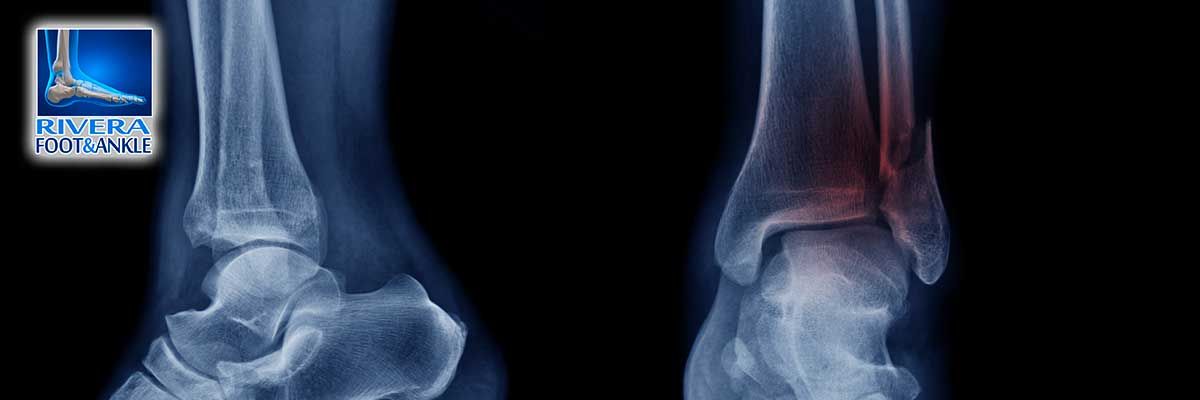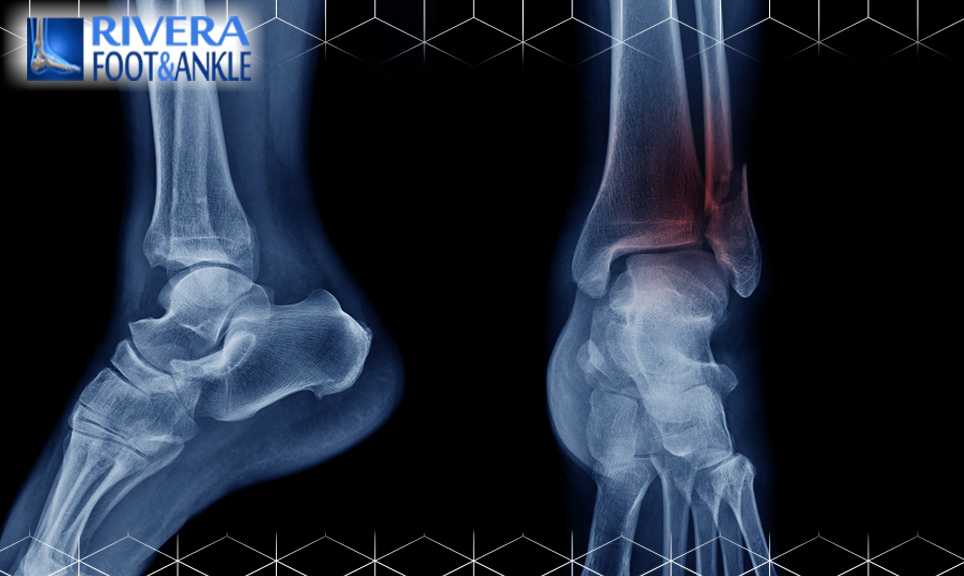
Podiatrist Houston
Tibia and Fibula Fractures
What You Need to Know About Tibia and Fibula Fractures
- Tibia fractures are the most common lower extremity fractures in children. They account for 10 to 15 percent of all pediatric fractures.
- Fractures can be described as low-energy — caused by twisting or falls from standing height. Or high-energy — caused by high levels of force, such as a car accident or a fall from a long distance.
- A physical examination and X-rays are used to diagnose tibia and fibula fractures.
- Treatment for tibia and fibula fractures ranges from casting to surgery, depending on the type and severity of the injury.
What are tibia and fibula fractures?
Tibia and fibula are the two long bones located in the lower leg. The tibia is a larger bone on the inside, and the fibula is a smaller bone on the outside. The tibia is much thicker than the fibula. It is the main weight-bearing bone of the two. The fibula supports the tibia and helps stabilize the ankle and lower leg muscles.
Tibia and fibula fractures are characterized as either low-energy or high-energy. Low-energy, nondisplaced (aligned) fractures, sometimes called toddler’s fractures, occur from minor falls and twisting injuries. High-energy fractures, such as those caused by serious car accidents or major falls, are more common in older children.
Tibia and Fibula Fractures Diagnosis
Fractures of the tibia and fibula are typically diagnosed through physical examination and X-rays of the lower extremities.
Common Types of Tibia and Fibula Fractures
There are several ways to classify tibia and fibula fractures. Below are some of the most common tibia and fibula fractures that occur in children. Sometimes they may also involve the fracture of the growth plate (physis) located at each end of the tibia.
Proximal Tibial Fractures
These fractures occur in the knee end of the tibia and are also called tibial plateau fractures. Depending on the exact location, a proximal tibial fracture may affect the stability of the knee as well as the growth plate. Common proximal tibial fractures include:
- Proximal Tibial Epiphyseal Fracture: This type of fracture affects the top portion of the bone (epiphysis) and the growth plate. Separation of the growth plate from the bone is usually caused by direct force to the knee. It’s important to have this type of fracture corrected properly. It may affect future growth and cause deformities if not addressed correctly. Treatment usually consists of setting the bone without surgery, which in some cases may be accompanied by surgical insertion of special pins or screws to secure the tibia while it heals.
- Proximal Tibial Metaphyseal Fracture (Cozen’s Fracture): This fracture affects the “neck” of the bone (metaphysis), where the tibia starts to narrow down. It is most common in children between the ages of two and eight. This injury can happen when force is applied to the side of the knee while the leg is extended. It is typically treated by setting the bone without surgery and using a cast to reduce movement. The cast is usually worn for about six weeks. Valgus deformity (knock knee) is one of the main potential complications after this fracture.
Tibial Shaft Fractures
This type of fracture takes place in the middle, or shaft (diaphysis), of the tibia. There are three types of tibial shaft fractures:
- Nondisplaced: A fracture where the broken bones remain aligned. This type of fracture is usually seen in children under four. It can be caused by a mildly traumatic event or a twisting injury. Often, the first symptom is a limp. Examination usually reveals tenderness or swelling at the lower part of the tibia. The treatment typically involves immobilization in a short- or long-leg cast. The duration is three to four weeks for toddlers and six to 10 weeks for older children.
- Displaced, noncomminuted: A fracture where the bones are broken in no more than two pieces (noncomminuted) but are not aligned. This is an isolated fracture of the tibia with an intact fibula. It’s the most common tibial shaft fracture. It is caused by a rotational or twisting force such as a sports injury or a fall. Treatment includes setting the bone without surgery and a long-leg cast with the knee bent. Unstable displaced fractures may require surgery.
- Displaced, comminuted: A fracture where the bones are broken in several fragments and are not aligned. This fracture can be caused by high-energy trauma, such as a car accident or being struck by a vehicle. The treatment includes setting the bone without surgery and a long-leg cast worn for four to eight weeks. A short-leg weight-bearing cast maybe also be needed in some patients. Unstable fractures may need surgery to maintain alignment.
Distal Tibial Fractures
These fractures occur at the ankle end of the tibia. They are also called tibial plafond fractures. One of the common types in children is the distal tibial metaphyseal fracture. This is a fracture in the metaphysis, the part of tibia before it reaches its widest point.
These fractures are usually transverse (across) or oblique (slanted) breaks in the bone. Distal tibial metaphyseal fractures usually heal well after setting them without surgery and applying a cast. However, there is a risk of full or partial early closure of the growth plate. This may lead to a growth arrest in the form of leg length discrepancy or other deformity.
RIVERA FOOT & ANKLE: At Orlando H.Rivera DPM, our priority is to deliver quality care to informed patients in a comfortable and convenient setting. When you have problems with your feet, you need to turn to a podiatrist who listens and responds… an experienced doctor who knows the field and can effectively diagnose and treat your needs… a friendly physician who counsels you on the best ways to maintain and improve your health. Our physician(s) meet all these criteria. Plus, you benefit from a dedicated team of trained professionals who give you the individualized attention you deserve.

Podiatrist Houston
Foot and Ankle, Dr. Orlando Rivera, Advanced Foot & Ankle Specialist, Foot and Ankle Podiatry, Houston Foot & Ankle Surgical, Treatment of Foot and Ankle, Foot & ankle specialists, Podiatrist in houston, podiatrist in houston, Orlando H.Rivera DPM, Houston Foot Doctor, Foot and Ankle Surgeon Houston, Ankle and Foot Specialist Houston, Podiatrist Houston, Foot Pain Houston.



